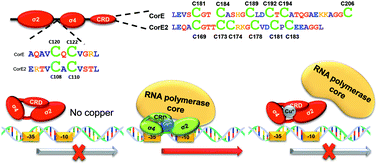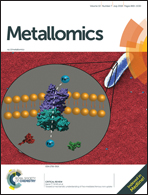The complex global response to copper in the multicellular bacterium Myxococcus xanthus
Abstract
The complex copper response of the multicellular proteobacterium M. xanthus includes structural genes similar to those described in other bacteria, such as P1B-type ATPases, multicopper oxidases, and heavy metal efflux systems. However, the two time-dependent expression profiles of the different copper systems are unique. There are a number of genes responsible for an immediate response, whose expression increases after the addition of copper, but rapidly decreases thereafter to basal levels. The regulatory element that controls this early response is CorE, a novel extracytoplasmic function σ factor that is activated by Cu2+ and inactivated by Cu+. Other genes are part of a maintenance response. These genes show a profile that slows up after the copper addition and reaches a plateau at 24–48 h incubation. Most of the genes involved in this response are encoded by the operon curA, which is regulated by the two-component system CorSR. Moreover, other genes involved in the maintenance response are regulated by different regulatory elements that remain unknown. Additionally, copper activates the transcription of the structural genes for carotenoid synthesis through a mechanism that requires the activation of the σ factor CarQ. Bearing in mind that M. xanthus is not very resistant to copper, it is speculated that the complexity of its copper response might be related to its complex life cycle.

- This article is part of the themed collections: Recent Review Articles and In memory of Silvia Atrian


 Please wait while we load your content...
Please wait while we load your content...